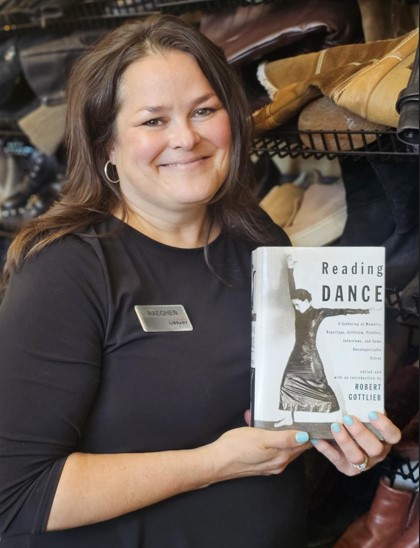Director of Gold Mine Stores Raeghen Peavey recommends Selected Reading Dance, edited by Robert Gottlieb.

Robert Gottlieb, former editor in chief of Simon & Schuster, Alfred A. Knopf, and The New Yorker magazine, has complied an excellent book on dance. Reading Dance contains interviews with well-known dancers, criticism, profiles, reportage, and excerpts from some of the best people in the business of dance. This compilation is easy to follow and broken up in a way that allows you to skip from section to section without any prior knowledge. Not knowing at first if I would be able to follow the writing or context, I found that I did truly enjoy this book.
My favorite section has been on Fredrick Ashton, the famous British Choreographer. His work in ballet is exceptional and he is regarded as one of the best in the business. The pages dedicated to Ashton contain remarks on his choreography and excellent criticism on his ballets. My favorite article from this section is Julie Kavanagh’s criticism of “Symphonic Variations,” known to be Ashton’s signature ballet pieces. Her analysis and breakdown of the ballet is done with rigor and professional insight; it makes understanding dance clear and meaningful. As with all Humanities, dance is an art form that requires some basic knowledge to understand, and Kavanagh’s critique is excellent in providing a guideline for understanding the ballet.
Another area I found interesting is the section on criticism. Joan Acocella authored a remarkable essay on the ballet, Allegro, il Penseroso ed il Moderato by Mark Morris. Morris uses a full orchestra, five solo singers, and forty choral singers for a ballet running two hours. He based this ballet on two poems by John Milton with music by Handel. Acocella provided an in-depth analysis of the ballet, coupled with enough history to understand the process and accomplishment that Morris engineered.
As readers, we should not be surprised by the interconnectedness of the humanities. Being a student of ballet myself in my younger years, the fact that we have a ballet that culminates these art forms together is extraordinary. As students of humanity, we need a large contextual canvas to pull all these varying and independent art forms together.
I will say Robert Gottlieb’s book is no light reading. It spans history and runs about 1,300 pages. The information is essential for anyone who is looking for an overview of dance literature. This book is recommended for anyone who loves the humanities and wants some background in the field of dance.
